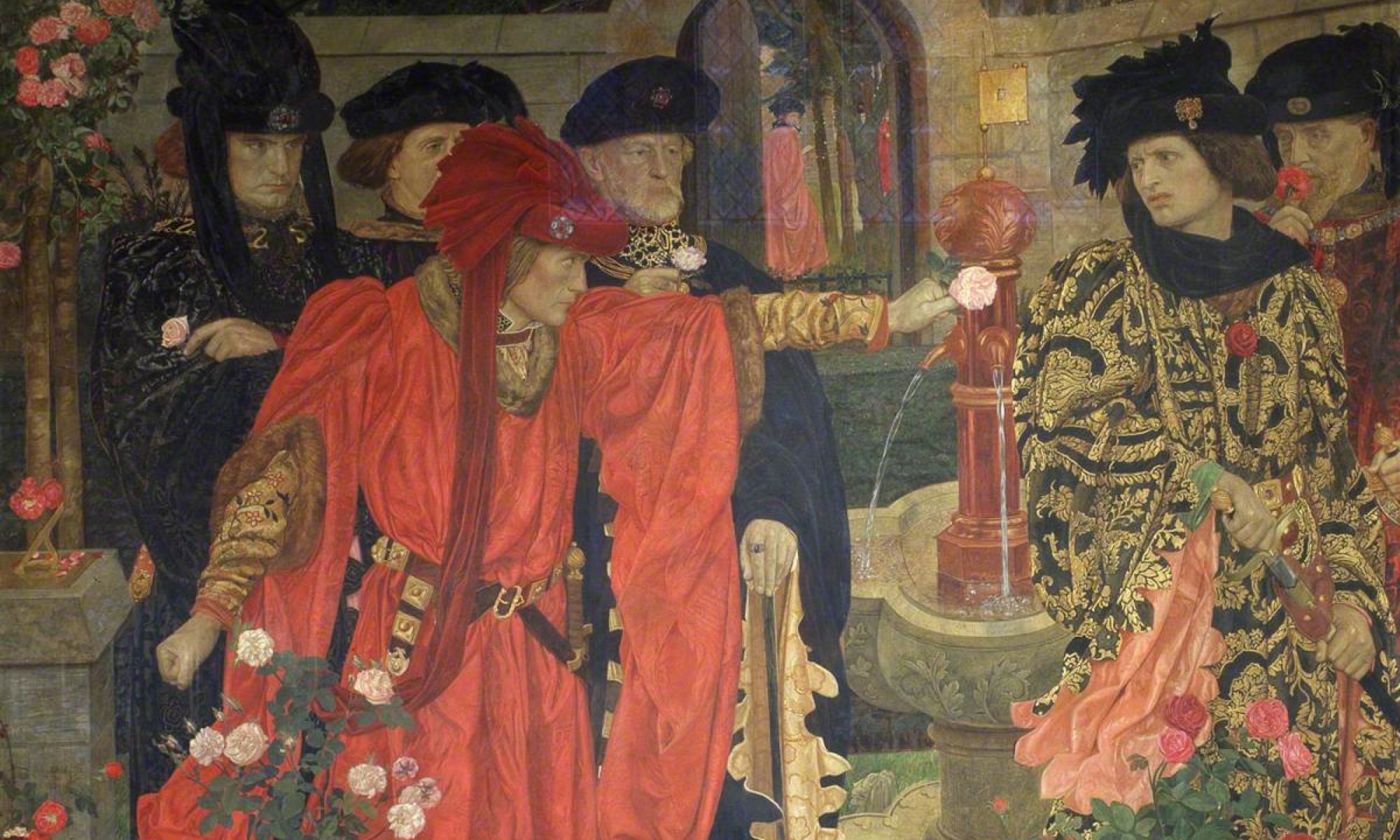Act V opens with a fanfare, as Edward professes victory at Ludlow Castle. He congratulates his men on their fighting and implores that, now that he has taken his vengeance upon Owen Tudor, he is willing to offer peace between himself and Catharine.
The following scene sees Isabella having been forced to marry Thyrrold. She questions the priest about the validity of the marriage, however, he insists it is lawful. After the priest leaves, Isabella finds out about Tudor’s death. Thyrrold insists that, as his wife, Isabella must submit to him, however, Isabella orders him not to touch her. Thyrrold then threatens that she will never see Clarence again. As she is lamenting her position, Clarence and his men burst in, fighting their way through the guards. In the chaos of the sword fight, Isabella is stabbed and falls to the floor. After chasing Thyrrold out of the room, Clarence falls to Isabella’s side. As they converse, they realise that they were both betrayed by Malavill. As she makes her final request for her body to be brought to Catharine, Isabella dies in Clarence’s arms. In his grief, Clarence attempts to fall on his own sword, however, Warwick enters and strikes it away. He convinces Clarence not to commit suicide, instead persuading him to fulfil Isabella’s request of carrying her body to the Queen.
The scene cuts to Catharine attended by her ladies, making a garland for her deceased lover. Catharine is mad with grief, telling Dacres that she cannot live without Tudor. In response, Dacres leads her children in in mourning. He instructs them to kneel in front of their mother, reminding Catharine of the promise that she made to Tudor, that she would live for them. Dacres then tells Catharine that he has found her a monastery, where she can live the rest of her days in peace, and she accepts this fate. Suddenly, Esparanza enters, lamenting that Isabella has been killed in the chaos of combat. Esparanza tells Catharine that Isabella’s last wish was her forgiveness, which Catharine gives. Catharine then orders her immediate march to the monastery. The play closes with Edward ordering his men to march on London, where he will attempt to continue the war to claim the English throne.
As the final scene closes, the audience is left with an atmosphere of pessimism, as they reflect on the emotionally charged storyline of Queen Catharine. Their heroine, Catharine, has a defeatist outlook on her impending confinement to the monastery, juxtaposing with what has been a play of frenzied passion and emotion. The play initially takes its impetus from a scorned lover – Edward – and his desire for vengeance and continues to build tension, until it peaks with the entry of Edward’s men into Catharine’s bed chamber in act IV. As Edward looks to his future battles in his closing speech, driven by his momentous victory over Tudor and Catharine, and Catharine begins the ‘dismal journey’ to the monastery, the audience is reminded of the famous sentiment ‘all is fair in love and war’.[1] To have such jubilation from one character contrasted with such misery from another reflects that this cliché, for Pix’s work at least, rings true.
A visual diagram of the play’s military and romantic relationships.
[1] Mary Pix, Queen Catharine: or, The Ruins of Love, a Tragedy (London, 1698), p. 52.

